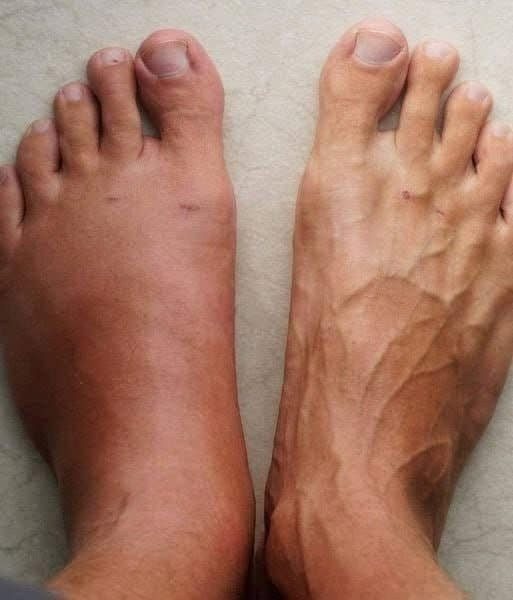Heart disease has quietly become one of the greatest global health threats of our time, with heart attacks remaining the leading cause of death worldwide. The fast pace of modern life, combined with poor dietary habits, sedentary lifestyles, and chronic stress, has only made the problem worse. While the statistics are grim, the truth is that many heart attacks can be prevented—or at least mitigated—if people recognize the warning signs in time.
Doctors stress that the body often sends signals as early as a month before a heart attack occurs. Unfortunately, many of these signs are either brushed off as minor issues or confused with unrelated conditions. By paying closer attention, individuals can seek medical help before the situation escalates into something life-threatening.
One of the earliest red flags is shortness of breath. This is not the normal breathlessness that comes from exercise but rather unexpected difficulty breathing during everyday activities or even while resting. It happens because the heart is no longer pumping efficiently, reducing oxygen flow throughout the body. When the lungs cannot get enough oxygen, simple tasks like climbing stairs or walking short distances may suddenly feel exhausting. Anyone who experiences this kind of unexplained breathlessness should seek medical evaluation immediately.
Another commonly overlooked signal is the onset of flu-like symptoms. Many people who later suffer a heart attack recall experiencing what felt like an ordinary cold or flu in the weeks leading up to the event. Fatigue, mild fever, body aches, or unexplained malaise can all mask underlying cardiovascular distress. While not every sniffle is a cause for alarm, persistent “flu” symptoms that don’t improve with time may warrant closer medical attention.
Perhaps the most recognizable and serious symptom is chest discomfort. Contrary to popular belief, not all heart attack warnings come in the form of sharp, stabbing pain. In fact, the sensation is often described as pressure, squeezing, fullness, or heaviness in the chest. Some people mistake it for indigestion or acid reflux, but unlike those conditions, the discomfort linked to heart issues doesn’t fully go away with rest or antacids. Any kind of recurring or unexplained chest pain should be treated as urgent until proven otherwise.
Weakness and fatigue also rank high among the early warning indicators. When arteries become narrowed due to plaque buildup, blood flow to muscles decreases. As a result, the body is deprived of the nutrients and oxygen it needs to function, leading to chronic tiredness. This fatigue often persists even after adequate sleep and rest. People may find themselves struggling to complete tasks that once felt effortless—an important sign that the heart may be struggling.
Another symptom that can appear in the weeks leading up to a heart attack is cold sweats and dizziness. Poor circulation disrupts the brain’s supply of oxygen, triggering lightheadedness and sudden sweating episodes without physical exertion. For some, this dizziness is so pronounced that it interferes with balance, creating risks of falls. If these episodes occur repeatedly, they should be taken seriously and discussed with a healthcare provider.
Persistent drowsiness is yet another subtle signal. Many patients report feeling constantly tired, sluggish, or unable to focus, even after sleeping through the night. This mental and physical exhaustion is tied to decreased circulation and reduced heart function, which slowly starves the body of the energy it needs.
Recognizing these signs can save lives. Medical professionals emphasize that prevention is not just about treating symptoms but also about adopting long-term lifestyle changes. Quitting smoking, maintaining a healthy weight, engaging in regular physical activity, and managing stress are among the most effective steps to protect cardiovascular health. Eating a diet rich in vegetables, fruits, whole grains, lean proteins, and healthy fats also strengthens the heart and lowers the risk of plaque buildup in the arteries.
Still, awareness is just as important as prevention. Too often, people dismiss symptoms until it’s too late, either because they assume they’re too young to have heart problems or because they downplay what feels like minor discomfort. But heart disease does not discriminate. While men over fifty and postmenopausal women are statistically at greater risk, younger adults are not immune—especially as modern diets and stress levels take their toll.
If you or someone you know begins to experience a combination of these symptoms—shortness of breath, chest pressure, unexplained fatigue, dizziness, cold sweats, or flu-like malaise—the safest course of action is to consult a physician promptly. In emergency cases, calling for immediate medical help can mean the difference between life and death.
A heart attack rarely strikes without warning. The key lies in listening to the body, recognizing the red flags, and acting quickly. By staying vigilant and making healthier choices, it is possible not only to lower the risk of a heart attack but also to build a stronger, more resilient future.

Leave a Reply